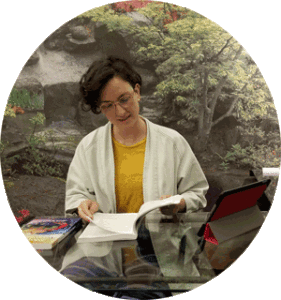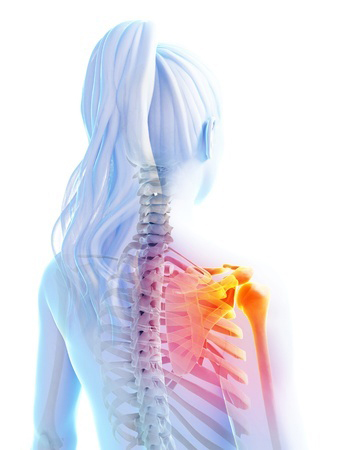Dr. Ron’s Favorite Raw Carrot Juice Recipe by Dr. Ron Cherubino
6 Stress Reduction Techniques I Recommend
6 Stress Reduction Techniques I Recommend
~by – Psychotherapist Dr. Anna Cherubino, DSc, LMHC

The following 6 Stress Reduction Techniques are some of the most effective that I have found. I use these with my patients here at the center and recommend their use at home. While these techniques are most effective when a person is under active psychotherapy care, they can be beneficial regardless.
Stress reduction techniques are an integral part of psychotherapy, and are often categorized as grounding, mindfulness, and creative practices.
Grounding Techniques
Grounding techniques are practices that help tether our mental and emotional states to the present. Usually used in a clinical setting as interventions to respond to panic, fight-or-flight, or anger, grounding techniques can also help anyone who wants these benefits. Think of grounding techniques as getting people out of their heads and into their bodies. Two grounding techniques I really love are Rainbow Counting and 5 Senses Countdown.
Stress Reduction Technique #1
Rainbow Counting:
- Stop whatever you are doing (or not doing) to take a look around the space you are currently in.
- Try to breathe slowly and look for one item in the room that is red. If you can’t find anything that is red, find the closest color to red in the room (e.g. pink, maroon, etc.).
- Describe this item to yourself (out loud or in your head).
- Look for a second item in the room that is the color orange. If there is nothing orange, find the closest color to orange.
- Describe this item.
- Continue to look for and describe the colors of the rainbow: Red, Orange, Yellow, Green, Blue, Indigo, Violet.
- Check in with yourself to see if this grounding activity has changed how you feel from before and after you complete it.
Technique #2
Five Senses Countdown:
- Stop what you are doing (or not doing) to check in with some of your senses.
- Name (out loud or in your head) five things you can see in the space you are in.
- Then, name four things you can hear (a fan, your heartbeat, humming/speaking, etc.).
- Next, name three things you can touch (sweater you are wearing, chair you are sitting on, etc.) and describe their textures (soft, cold, synthetic, etc.).
- Name two things you can smell (lip balm, food you may have nearby, essential oils, etc.).
- Describe one thing you can taste (nice time to have a snack, which is also grounding, or a piece of gum).
- Notice how you feel before and after this grounding activity.
Mindfulness Stress Reduction Techniques
Mindfulness techniques are used to bring a sense of calm and introspection when you may be feeling stuck, numb, or detached from your inner process. Like grounding techniques, they also rely on noticing the present. Think of mindfulness techniques as the opposite of grounding techniques — helping to reconnect with one’s mind. Two mindfulness techniques I like are Tone Breathing and Guided Imagery.
Stress Reduction Technique #3
Tone Breathing is the mindfulness technique where a sustained tone, from a bell, gong, singing bowl, or chime is used to bring one’s focus to that sound until the sound disappears.
- Be in a comfortable position with your feet on the ground.
- Focus on slowing your breath and then ring the instrument that will create the tone, once.
- Breathe slowly as you hear the sound fade.
- Try to make your exhales longer than your inhales.
- Notice the sound turn into silence.
- Stay in that silence as long as you like, in this meditative state.
Technique #4
Guided Imagery is telling a story, out loud or in one’s head, while focusing on relaxing. (The story can also be told by another person, in person or recorded).
- Begin by speaking a calming narrative while you focus on slow breathing and relaxing your body.
- Be in a comfortable position, maybe even lying down or reclined, and close your eyes.
- Tell yourself a descriptive, imaginative story about a place. For example, “I am at the ocean, I can hear the waves crashing on the sand, I can feel the sun on my skin, and I can smell the fresh salty air”.
- As you tell your story, focus on your body relaxing with each exhale.
- With each inhale take in fresh, clean, new air and with each exhale rid your lungs of the old, stale, spent air.
- After your narrative is done, you can stay in this meditative state for as long as you want, focusing on your breath and feeling relaxed.
Creative Techniques

Creative techniques can be used to assist in either grounding or mindfulness and have the added benefit of being tailorable to the individual’s needs. Two examples of creative techniques to use for stress-reduction are Journaling and using a Talisman.
Stress Reduction Technique #5
A Journal can be online or physically on paper; it can be made up of poetry and art as well as classic narrative writing. The beauty of a journal is in its personalized state. You can decide to keep your journal as secret or as serious as you like; it can be organized or sporadic.
Try journaling in a future tense to mix up any writer’s block you may be having about starting the process. You are in control of your journal, and this process of creation and ownership breeds empowerment.
Technique #6
A Talisman is a small object that people carry around with them. This object can be homemade or found. Use your imagination to tell a story about how it protects you, and each time you need to, look at or touch the object to remind yourself of the story it holds. This type of ritual can bring you closer to yourself as you consider the personalized story you made and reorient you to your current surroundings.
Children are well known for keeping a talisman in the form of a favorite stuffed animal, blanket, or toy. This object is psychologically imbued with the power to protect them from bad dreams, curb negative thoughts, or even give them advice. Children do this process naturally; we adults need only to remember our innate ability to create these coping strategies.
In conclusion, I want to reiterate that anyone can use grounding, mindfulness, and creative techniques as part of their personal self-care. Techniques like these are examples of practices people can have in their toolbox of mental and emotional health as they work with a psychotherapist to gain deeper insight into their lives.
Grounding, mindfulness, and creative techniques are tools that accompany the larger mental health process of psychotherapy. This process can enhance anyone’s mental and emotional health to optimize their quality of life and create resilience in the face of inevitable human challenges and hardships.

Anna Cherubino is a Licensed Mental Health Counselor (LMHC) in Massachusetts and New York and holds a master’s degree in Expressive Arts Therapy. She is affiliated with the Brain Center at Cherubino Health Center.
Anna’s goal is to help her clients through empowerment, creativity, and psychoanalysis, to become their best possible selves.



